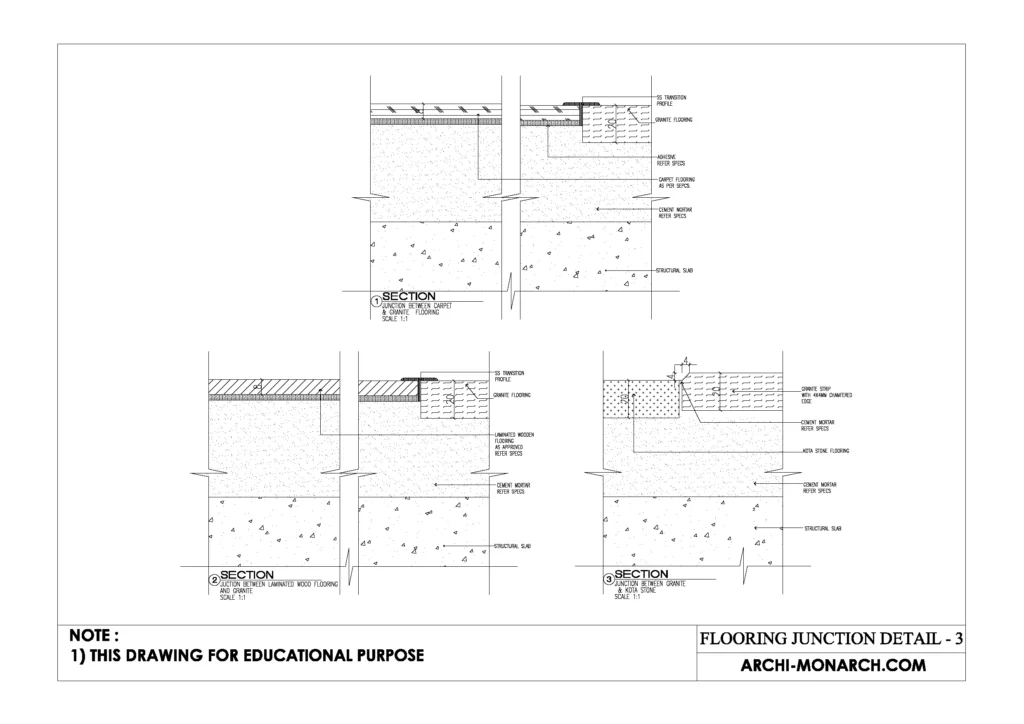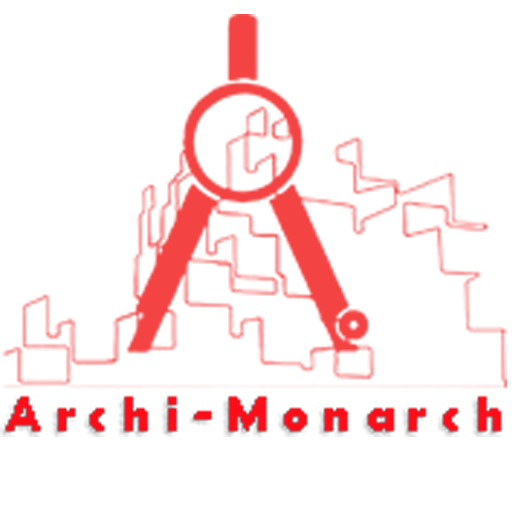In architecture, a flooring junction is a point where two different flooring materials meet. This could be where a carpeted room meets a tiled kitchen, for example, or where a hardwood floor transitions to a linoleum hallway.
Flooring junctions can be located in various places within a building, and they can be used to create visual interest or to define different areas within a space.
They may also be used to hide unevenness in the subfloor or to accommodate changes in flooring material due to the transition between rooms or levels.
If you want to know about the submission drawing or lift lobby and atrium detail or standard detail, please click the link.
Image of flooring junction detail and downloadable (in DWG) link below

Flooring junction detail drawing – 3
A flooring junction detail drawing is a technical drawing that shows how two different flooring materials are to be joined together at a junction point. It typically includes detailed information about the materials to be used, their dimensions, and the methods of installation.
The drawing may also include information about any trim or transition strips that are to be used to cover the junction, as well as details about any subfloor preparation that may be required.
Flooring junction detail drawings are often created by architects or interior designers as part of the construction or renovation process. They are used to communicate the design intent to contractors and to ensure that the flooring junction is installed correctly and to the desired specifications.
In addition to providing important technical information, these drawings can also be used as a reference for maintenance and repair work in the future.
Here are a few more points about flooring junctions in architecture:
- Flooring junctions can be straight or angled. A straight junction occurs when the two flooring materials meet in a straight line, while an angled junction occurs when they meet at an angle, such as in a corner.
- Transition strips are often used to cover flooring junctions and provide a smooth transition between the two materials. These strips can be made of a variety of materials, including metal, wood, or plastic, and are available in a range of styles to match different flooring materials and design preferences.
- In addition to covering the junction, transition strips can also serve as expansion joints to allow for movement in the flooring materials due to temperature and humidity changes. This is especially important in larger buildings or in areas with significant temperature fluctuations.
- Proper installation of flooring junctions is important to ensure that the materials are secure and that the junction is visually appealing. This may involve the use of adhesives, nails, or other fasteners, as well as the proper cutting and fitting of the materials.
- It is important to consider the overall design and functionality of a space when selecting flooring materials and designing flooring junctions. Factors to consider may include the intended use of the space, the level of foot traffic, the desired aesthetic, and any maintenance or durability requirements.
Our tips to help you improve your architectural flooring junction detailing.
